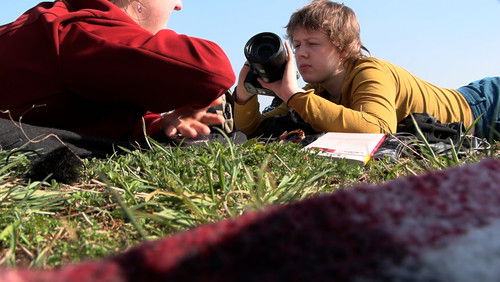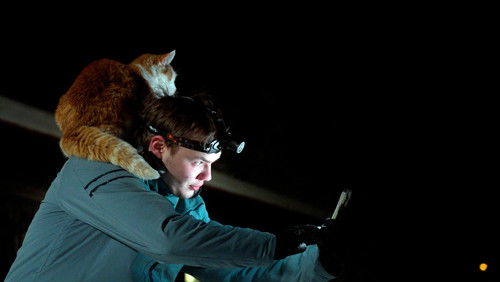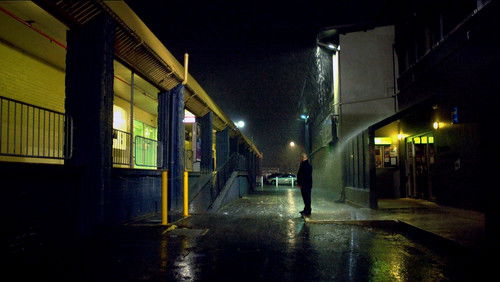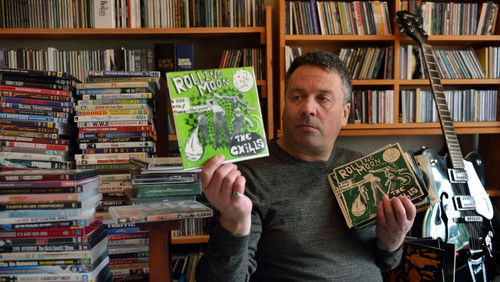In Loco Parentis (2016)
53KIn Loco Parentis (2016). In Loco Parentis: Directed by Neasa Ní Chianáin, David Rane. With Dermot Dix, Amanda Leyden, John Leyden. Long careers are drawing to a close for John and Amanda, who teach Latin, English, and guitar at a stately home-turned-school, where they are legends with a mantra: "Reading. 'Rithmetic. Rock 'n' roll!" But leaving is the hardest lesson.
“What struck me most about this school is that it was supposedly an elite school in Ireland (u0026amp; presumably charging quite high fees), located in an old stately home. Yet the actual u0026quot;physical school facilitiesu0026quot; that they had (on the inside of the building) were not very impressive by the standards of most modern schools.u003cbr/u003eu003cbr/u003eI thought their facilities u0026amp; classrooms looked somewhat old u0026amp; decrepit u0026amp; run-down, u0026amp; very much below standard, when you compare it with any other modern-day school. However, it looked like their class sizes were very small, u0026amp; it seems that the quality of the teaching must have made up for a lot of the good facilities which they lacked, because some of them obviously managed to get into the British schools of their choice such as Eton u0026amp; Harrow.u003cbr/u003eu003cbr/u003eYou donu0026#39;t ever see either of the 2 main featured teachers do any really serious u0026quot;subject teachingu0026quot;, though they do seem to have a unique way of getting across to their students in a lot of areas. The casual-ness of Johnu0026#39;s classroom attire as a teacher seemed a bit below par to me -often wearing just a sweat shirt u0026amp; an old pair of jeans. I think in most countries, a certain standard of dress would normally be required of teachers, especially in a school which is quite elite, u0026amp; therefore also one assumes, quite expensive in terms of school fees. Johnu0026#39;s standard of dress did make me wonder how well these teachers are paid. Perhaps teachers are not very well paid in Ireland, even in very elite schools which charge very high school fees. John came across as being a little bit eccentric.u003cbr/u003eu003cbr/u003eThe schoolu0026#39;s boarding facilities also looked rather cramped to me. In most modern boarding schools these days, students could normally expect to have their own small study-bedroom cubicle or room u0026amp; a bit more privacy than these children had. It looked like there were at least 4 students per room/study-bedroom, u0026amp; the students were all in bunk/double-decker beds (I guess they must have been short on space). The secondary school I attended back in the 1970u0026#39;s was also a boarding school, but there were no bunk beds in the dormitories even then, u0026amp; the older-style cubicles/rooms (if one could call them that) were very large, with about 6 beds – 3 on each side of the room, alongside each other, with plenty of space in between for a wardrobe etc for each person. But by 1975, most students had their own small cubicle/study-bedroom.u003cbr/u003eu003cbr/u003eI donu0026#39;t know how many students this particular boarding school in Ireland (called Headfort School) catered for, but it looked like possibly only a few hundred at most – which is quite small by most school standards these days. Often these days, schools claim they need to have at least 1,000 pupils to make it viable, u0026amp; they are always trying to u0026quot;growu0026quot; the student numbers. It looks like Headfort School does not have much capacity to increase its student numbers.u003cbr/u003eu003cbr/u003eThe 2 featured teachers at this particular school were obviously very devoted to the school u0026amp; its students, u0026amp; had been there for almost 50 years. They are both approaching retirement u0026amp; are wondering what they will do once they donu0026#39;t have to come to the school each day to teach. It looks like they live in a house provided for them by the school, u0026amp; just a short distance away from the school. But even the inside of their house, like the school, also looks rather old u0026amp; somewhat run-down. Once they retire, theyu0026#39;ll no longer be able to live in school-provided housing.u003cbr/u003eu003cbr/u003eI definitely think this is a documentary well worth seeing, even if just to see how the other half lives. And I do wonder how the 2 featured teachers (a husband u0026amp; wife) will enjoy their retirement u0026amp; what they end up doing in their retirement years. I can well imagine it might be something to do with helping children…”









